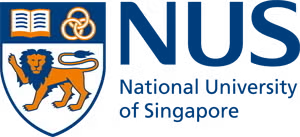We often take for granted what assessment is and what it seeks to do. However, as reflective teachers, we should ask ourselves: what are the different purposes an assessment could serve? Or the more pertinent question: Why do we assess?
The purposes of assessment are multifaceted and will vary from course to course, and from student to student. On a broad level, we might find three overarching categories of purposes:
For certification – how did I do?
The first category of purpose is what is known as a summative assessment, serving as a summation of students’ achievement over a particular period or at the end of a course. The purposes that summative assessments serve include:
- determining who should progress to an advanced course;
- generating marks and grades that are weighted to contribute to a final assessment;
- ensuring that all students have met minimum standards; and,
- helping students track their overall performance.
For improving students’ learning – how am I doing?
The second category of purpose relates to improving students’ learning, and is known as a formative assessment. These assignments, rather than resulting in a mark or grade or decision whether to pass or fail, should influence students’ study behaviour and enhance the possibility of students meeting learning outcomes. Some purposes of formative assessment include:
- judging whether students are ready to study particular subject matter;
- enabling students to judge whether they need to study further in a particular area;
- providing information to enable students to improve their performance;
- diagnosing particular student difficulties; and
- building student’s confidence that they are being successful in their studies.
With the information from formative assessment, teachers can also use it to inform instructional decisions, and to evaluate the impact of their own teaching practices.
For longer-term learning – how can I do better next time?
The last category may be termed sustainable assessment (Boud, 2000), it develops students’ ability to independently judge their work, which is an important skill for the longer term. The argument here is that students need to be able to judge their own work and decide for themselves what quality work looks like, so that they can be effective, life-long learners. Sustainable assessment helps students by serving the following purposes:
- developing students’ capacity to make judgements about their own learning; and
- developing students’ skills in applying appropriate standards and criteria for their own work.
In your teaching journey, you will come across many competing demands on assessment, and sometimes tensions may arise when you have to manage contradictory purposes, which may result from the different requirements for a course or programme.
Teachers need to be clear of the intended purposes of any assessment task, and ensure that it has the effects that it needs to have within the context of a course. A key concept for teachers is this notion of ‘fitness for purpose’ – a course’s assessment should consist of different activities which are aligned and meet the learning outcomes required. For example, a brief, informal quiz may be effective in some cases, such as to help the lecturer decide whether to move on or devote more time to the topic at hand and to help students to self-assess their own understanding; but, it will do poorly if the purpose is for students to address their ability to apply concepts in complex problem-solving situations.
An important caveat for teachers is to deliberately and carefully design assessments that are ‘fit for purpose’, i.e., lead to improvement of student learning.
Further readings
This is a comprehensive and useful book that unpacks formative assessment (or Assessment for Learning), with practical examples of how to implement these assessment approaches in your classes. Samball, K., McDowell, E. and Montgomery, C. (2012). Assessment for Learning in Higher Education. London: Routledge.



































































